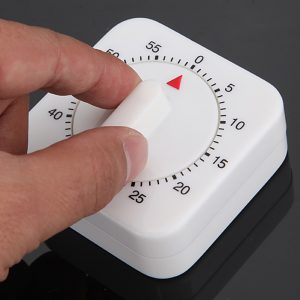Is it possible to live in a small area? You bet it is!
Most of us know people living in small houses or apartments, going to college and living in a dorm for the first time, or moving from a big home to a smaller one. Even if you don’t, you may have experienced one of these situations yourself at some point.
Did you feel challenged trying to fit everything in your new space? Does the person you know feel challenged trying to do the same thing?
If you follow these five (5) tips, it really is easier than you think:
1. Divide the space into specific areas for each activity (e.g., bill paying, watching TV, hobbies, laundry, reading, or studying). Furniture and rugs can be used to separate the different activities. For instance, your bedroom may have to act as an office plus a place to sleep and get dressed. Use a desk and file cabinet in one area of the room and the bed, bureau, and night stand in another. Keep the items in their specified areas; do not let them wander into the other activity areas.
2. Use milk crates on shelves that allow of extra space between them and the ceiling. Position the milk crate so the opening faces out. This way you’ll be able to store things both inside the milk crate and on top of it. It acts as a second shelf.
3. Use over-the-door storage units or command strips to hang things on the back of doors, in closets or on walls. You can hang items in or on them to get the items off your bed, chair, table, or desk. Don’t let them end up on the floor. The best part about command strips is that they do not damage the walls.
4. Use wall shelves to take advantage of vertical space. You can use your walls from floor to ceiling for storage.
5. Take advantage of the space under your bed. Use clear plastic bins that are specifically designed for under the bed. Measure the amount of clearance you have between the floor and the bed frame to make sure the bin fits. An option that affords you more storage space is raising the bed.
Just think, when living in a smaller area, you’ll have less to take care of. That frees up your time to do the things you want to do!
“We have thoughts, feelings and emotions, but we are not our thoughts feelings or emotions” Frances Vaughn
Mental Clutter is more mysterious and different from physical clutter. It hides, and resides in the mind disguised. It can be defined as an abundance of thoughts, and self-talk swirling around in our headspace! Layers of current thoughts, past thoughts and thoughts waiting to be triggered will occupy the mind space. Then if emotions arise, the mental clarity is gone and the cluttered brain exists.
On one level, mental clutter can be caused by:
On a deeper level, other mind clutter may not show up on your radar screen, depending on how self-aware you are. Things appear as they are, and we say it’s just the way it is!! We are blindsighted by the thought. Here’s one example: perfection. The thought of being perfect exists, regardless of why, or how it is there. You hold onto the belief that being perfect is the way to be and think. There isn’t much freedom in having this thought. It sabotages actions, and brings on negative self-talk.
Here’s what is true: we are in total control of what we choose to think or believe. Although what thoughts are in the mind can come from limiting beliefs you hold on to and live by. Sometimes these are generalizations, ideas or interpretations that you hold on to and then forget you did. At some time you may have felt strongly connected to them but now you’ve grown and changed and they don’t fit! All these thoughts may be laying dormant until something triggers it to surface. Next, you are living a life that’s not yours.
Try looking at where this thought, or belief came from. You may realize the roots of this. With introspection you realize that it doesn’t serve you anymore at this time. It’s time to give it up and free yourself. What I mean by this is, you may have lost touch with what’s really important to you – now, in the present. Maybe at one time all these thoughts, beliefs, and truths matched what was important to you. You can ask yourself, how true is this belief? The end result is living true to who you are, and who you say you are. In any given moment you can “CHOOSE” what you want to think or what doesn’t fit. The choices you make can motivate and uplift your spirit. Staying true to yourself brings inner peace.
Mindfulness and awareness will be the guide for clearing the mental clutter.
The principles of organizing apply here:
Assess what’s going on.
Take Action – Either jot down all that’s in your head until you feel empty. Seek support, like someone to talk or vent to. This helps in getting all the stuff out of your head.
Sort what thoughts to hold on to and why.
Identify what doesn’t serve you anymore. Ask yourself if any of those thoughts are draining you and your energy? Can you rephrase your thoughts so they empower you?
Choice – With acknowledgment, awareness and conscious choice, a clearing takes place. The result can be more head space! This is freeing. You may notice your energy higher. You may feel like you shed a layer or two, feel lighter, and quite positive.
Space has been created and quietness of mind and peace attained – You now have a blank slate.
 While I was going through items in a kitchen pantry with one of my clients, she commented on how easy it was to organize in the kitchen. When I asked why, she said that if food is expired it takes the decision out of her hands about whether to get rid of it or not. However, with the rest of the stuff in the home, she has to make the decision whether it has ‘expired’ or not. Deciding on the life cycle of your belongings is not easy, but when your spaces become too crowded or you can’t find your keys for the third time in one week, it’s time to take action.
While I was going through items in a kitchen pantry with one of my clients, she commented on how easy it was to organize in the kitchen. When I asked why, she said that if food is expired it takes the decision out of her hands about whether to get rid of it or not. However, with the rest of the stuff in the home, she has to make the decision whether it has ‘expired’ or not. Deciding on the life cycle of your belongings is not easy, but when your spaces become too crowded or you can’t find your keys for the third time in one week, it’s time to take action.
The life cycle concept is one way to work through the backlog of the accumulated clutter in the home and as a strategy to constantly weed out stuff. Our stuff has a life cycle that begins with it being most useful, most beautiful and most beloved. Over time our stuff becomes less useful (obsolete technology; items that wear out or break), less beautiful (fashion trends or our tastes change), and less beloved (reminders of past periods in our family’s life that may not be so important).
When you think about all of the items you bring in to your home on a weekly or monthly basis, it boggles the mind. But if you don’t take out as much as you bring in, over time you will begin to feel like your stuff is taking over. If some of your belongings are starting to become CRAP (Clutter that Robs Anyone of Pleasure), it’s time to consider whether those belongings are part of your family’s present and/or future. Keeping items from the past that no value or meaning to the present day leaves less room for additional items (or opportunities) for the future. For example, as your children grow, do you hold on to the toys they used to love, even though they don’t want them anymore?
Finally, if you are keeping items because you think they might be worth a lot of money, there are ways to find out. One way is to look on Ebay. Is anyone selling the item now? Has anyone sold that item in the last two weeks and for how much? Reputable auctioneers are also good resources for evaluating antiques and collectibles. Mass produced goods from 1960 or later have less of a chance to increase in value. But remember, regardless of what items may have been worth in the past; items are only worth what someone is willing to pay for them today.
When your clutter starts to take over your home, reevaluate whether the life cycle of those items is over or not. Someone else may be able to give your unneeded items a whole new life.
Clutter Quote: “Do not spoil what you have by desiring what you have not; remember that what you now have was once among the things you only hoped for.” Epicurus, ancient Greek philosopher
 Can you relate to this scenario? You’d been really good about keeping up with clutter and then came the holidays. Things got scooped up and hidden in closets instead of being put in their proper places. Since the New Year you haven’t even tried to tidy — you’ve been leaving items here, there and everywhere.
Can you relate to this scenario? You’d been really good about keeping up with clutter and then came the holidays. Things got scooped up and hidden in closets instead of being put in their proper places. Since the New Year you haven’t even tried to tidy — you’ve been leaving items here, there and everywhere.
BACKSLIDING is a common occurrence and can be rectified relatively easily. Here are some steps you can follow:
By following these guidelines, I guarantee the next time you have company or want to clean up, you’ll quickly be able to deal with the minimal clutter. By putting items in their assigned homes, you will save time and eliminate angst.
Click on the above title to learn more about the featured author.
 Brrrr…it’s cold in most of the country. We spend more time indoors. What’s your favorite indoor activity? I bet reading immediately sprang to mind!
Brrrr…it’s cold in most of the country. We spend more time indoors. What’s your favorite indoor activity? I bet reading immediately sprang to mind!
Is your book collection organized so you can find just the right book you’re in the mood to read? Excellent! Or like many folks, are books scattered around the house? Do you even know what books you have? Do you regularly purge unwanted books or let them continue to occupy valuable space and collect dust?
Now is a great time to organize your books. Here are 11 tips.
My largest book organizing project was 17 years ago with my first client. In his library he had between 1,000 and 2,000 books. They were out of order. There were duplicates and triplicates. His library was completely nonfunctional. It took time, but after donating many of them and organizing the rest according to my client’s preferences, that massive job got done. My client was thrilled to have a functional library that looked great too!
For my personal collection, I mix it up. Fiction books are arranged in alphabetical order by author’s last name. Books in other categories (such as organizing, business and design) are separated by category but not in any order. Some books are vertical. Some are horizontal. Small framed photos and pieces of art add to the overall look. I donate books that no longer interest me. My book collection is functional and attractive. With a little time and effort, yours can be too.
Downsizing and organizing your books is worth doing. Then, when planning your next vacation, you can quickly grab the ones you want to read – much better than wasting time searching around the house or wasting money buying more at the airport.
Click on the above title to learn more about the featured author.
Do you ever open your closet and think, “I have nothing to wear!”? Do you ever feel like you have certain “go-tos” and you ignore the rest of your closet? Do you keep things because they might come back into style?
Imagine a different scenario. Imagine a closet filled with only those clothes that ‘spark joy,’ clothes that make you feel confident and amazing, clothes that are comfortable and cared for. In just five hours, it can!
The New York Times bestseller, The Life-Changing Magic of Tidying Up, by Japanese de-cluttering guru Marie Kondo, teaches you how. As a member of the first class of KonMari consultant trainees, I love spreading the KonMari idea of #organizetheworld. Please see below my own take on how you can tackle the clothing category using the KonMari method, step by step.
Step One:
Find a time in your schedule when you can get five hours, distraction free. No kids. No husbands. No phones. This is YOUR time.
Step Two:
Pile every item of clothing on the bed.
Take a ‘before’ picture!
Step Three:
Divide the clothes into broad categories like: Tops, Bottoms, Skirts, Pajamas, etc. Don’t worry about deciding what to keep yet. Focus on sorting, not discarding.
Step Four:
Now this is where the magic really comes in. You are going to take each and every item of clothing in your hand and ask yourself: Does this spark joy? Pay attention to how the garment makes you feel. Does it give you a jolt of happiness? Do you love wearing it? Or do you frown, think about feeling frumpy, or have a bad memory?
A few tips:
Step Five:
Put all of your donations and items to sell right in the car! While you have them sorted, you can even enter the donations into an app like It’s Deductible or onto a printed Goodwill checklist. You can save thousands at tax time with donations!
Step Six:
Put all of the clothing that sparks joy back into the closet and folded in their drawers. To learn how to do Marie Kondo’s special folding method, visit this video. Think about using all that extra space in your closet to display your favorite items. I put my favorite books and my grandmother’s milk glass on the top shelf of my closet, where all of my bulky sweaters used to fall over onto each other. Some people hang artwork inside the doors or display wedding photos.
A few tips:
Now sit back, take that after photo, and enjoy! After just five hours and six steps, you’ve created a closet that gives you joy, easy mornings and a boost of confidence.
Click on the above title to learn more about the featured author